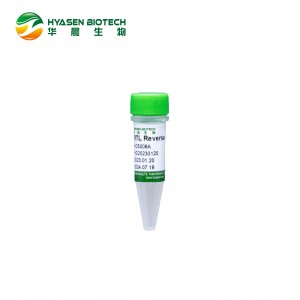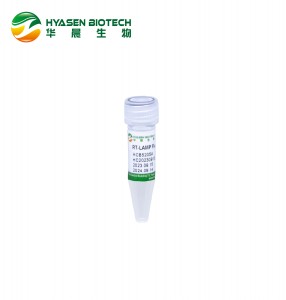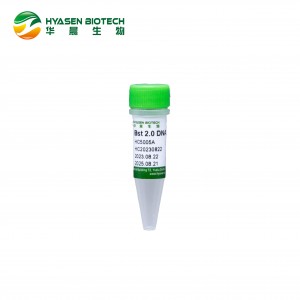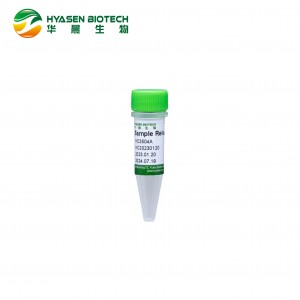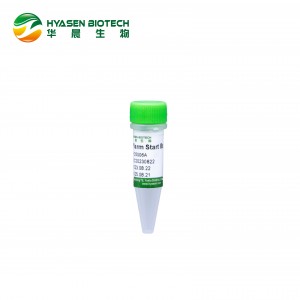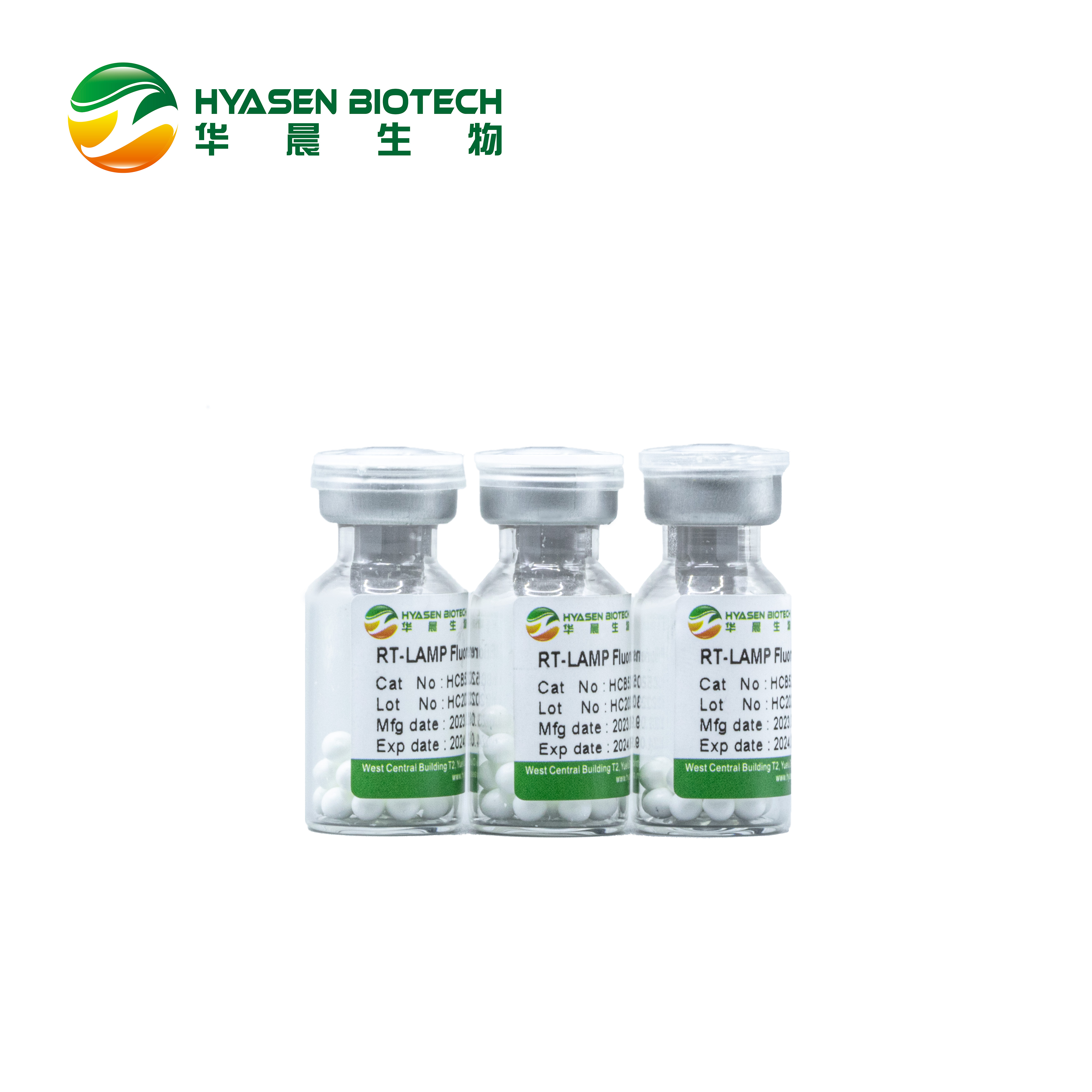
RT-LAMP Fluorescent (Lyophilized ball)
RT-LAMP Fluorescent Master Mix (Lyophilized Powder) contains reaction buffer, Bst DNA polymerase and heat-resistant reverse transcriptase, lyophilized protectant, and fluorescent dye. The product is in the form of lyophilized beads, and only primers and templates need to be added for use.
Reagent Component
RT-LAMP Fluorescent Master Mix (Lyophilized Powder)
Usage
For DNA or RNA isothermal amplification
Storage Conditions
Transport and store at 2~8°C.
Shelf life: 12 months.
Protocol
1. Take out the corresponding number of lyophilized beads according to the number of tests.
2. Reaction system preparation
|
Component |
Dosage |
|
RT-LAMP Fluorescent Master Mix (Lyophilized Powder) |
2 beads |
|
Fluorescent dye |
x μL |
|
10 × Primer Mix a |
5 μL |
|
Templates DNA/ RNA b |
n μL |
|
Total |
50 μL |
Notes:
1) a. 10×Primer Mix : 16 μM FIP/BIP, 2 μM F3/B3, 4 μM Loop F/B;
2) b. The nucleic acid template is recommended to be dissolved in DEPC water.
Hyasen Biotechnology Co., Ltd
3) Reaction program
|
Temperature |
Time |
Cycles |
|
65℃ |
60s a |
30 |
Notes:
1. Collect fluorescent sign
Notes
1. The reaction temperature can be optimized between 62°C and 68°C according to the primer conditions;
2. The experiment should standardize the operation, including the preparation of the reaction system,sample processing and dosing;
3. To avoid contamination, it is recommended to prepare the reaction system in an ultra-clean table and add templates to the fume hood in other rooms to avoid false positive interference.






